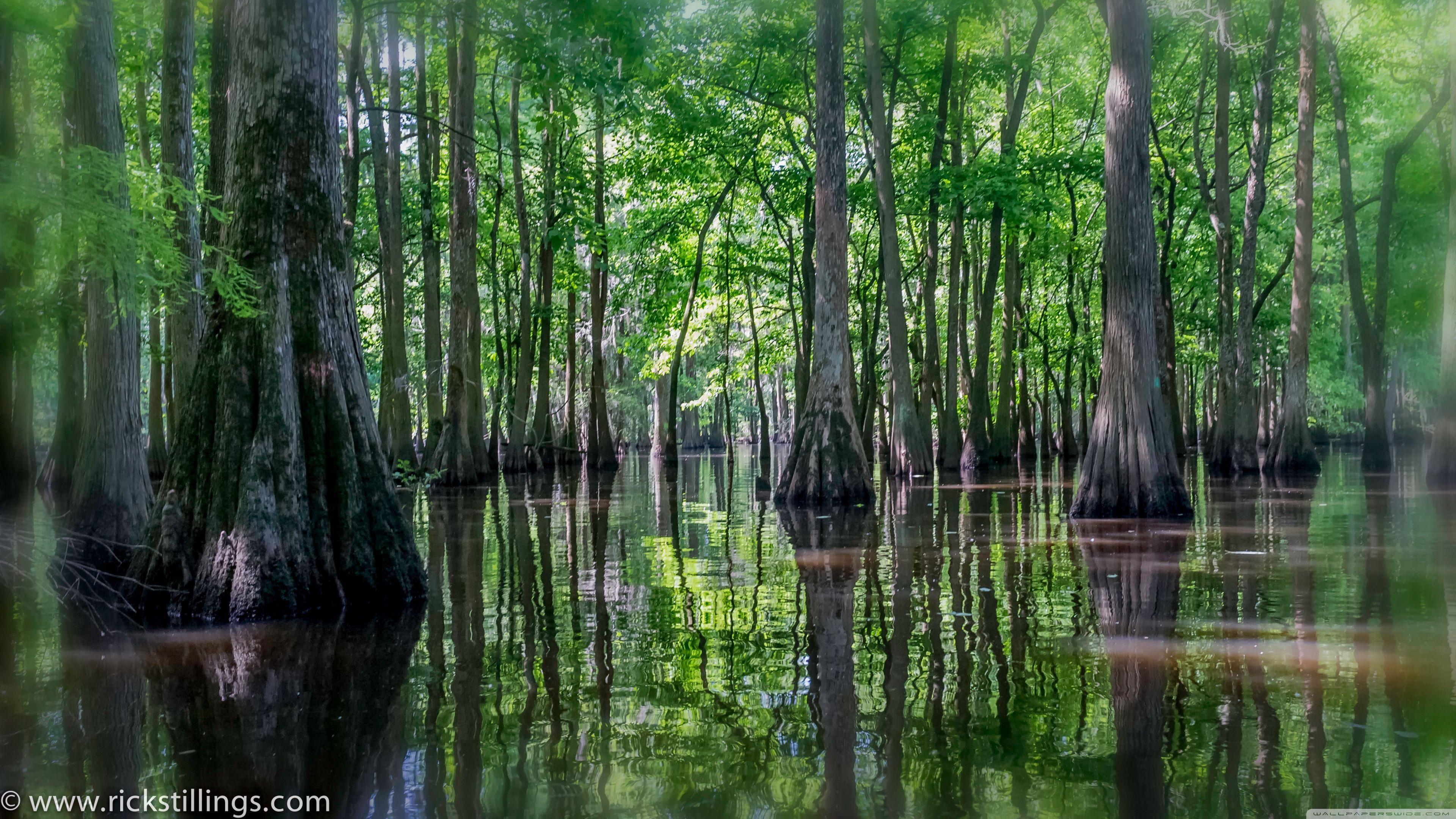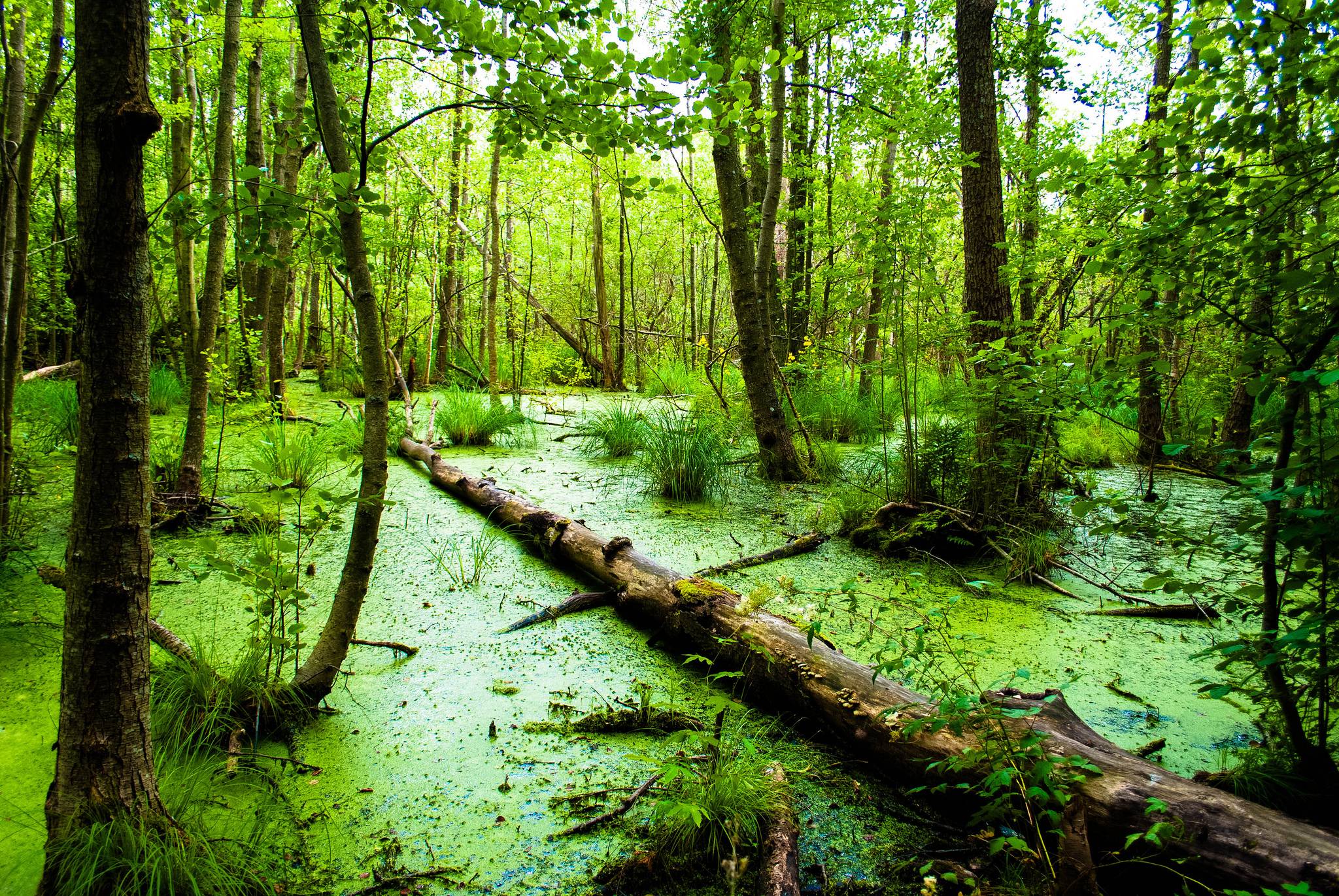Have you ever considered how big construction equipment moves across really soft, wet ground? It's a pretty interesting challenge, actually. Think about a swamp, for example. My text describes a swamp as a kind of wetland with mineral soils that don't drain well, and it's full of trees. This tree presence is what makes it different from a marsh, you know? Swamps are found all over the world, often in low spots near rivers, and they're usually partially or sometimes completely covered with water, often with lots of woody plants. Getting heavy machinery through places like that would be a real mess without some clever solutions, so it's almost like a puzzle.
That's where something called a "swamp mat" comes into play, as a matter of fact. These aren't just any old pieces of wood or plastic; they're specially made to help people and big machines get around safely and steadily in those tricky, sensitive environmental spots. They're pretty important for keeping projects moving forward without damaging the natural surroundings too much. You see, they create a kind of temporary road or solid base where there isn't one naturally, which is quite clever.
These mats, sometimes called cable mats, swamp pads, or digger mats, are used by excavators and other large equipment when they're working on very soft ground. They usually come with cables at both ends, which helps with moving them around. They are, in a way, the unsung heroes of many construction, energy, and environmental projects, making sure everyone stays safe and the ground stays protected. We'll explore more about these useful tools and why they matter so much, so just keep reading.
Table of Contents
- What Are Swamp Mats?
- Why We Need Them: The Challenge of Wet Environments
- How Swamp Mats Help: Benefits for Your Project
- Types and Features of Swamp Mats
- Getting Your Swamp Mats: Buying, Renting, and More
- Caring for Your Mats: Cleaning and Maintenance
- Frequently Asked Questions About Swamp Mats
What Are Swamp Mats?
Swamp mats, which people also call access mats, timber mats, or even rig mats, are basically heavy-duty platforms. They're made to be placed over soft, unstable ground. My text mentions they are often made from timber, but other materials exist too. These mats create a firm, level surface. This helps people and heavy machinery move around without getting stuck or sinking into the mud, which is a common problem in wetlands. They are quite essential for temporary access.
They're not just for swamps, though. You'll find them useful in any wetland or marsh area where the ground is just too soft for regular operations. They're designed to spread the weight of big equipment, like cranes or excavators, over a much larger area. This helps keep the equipment from sinking, and it also protects the ground underneath. It's a pretty smart solution, you know, for a tough problem.
My text points out that these mats are often supplied with cables at both ends. This feature, arguably, makes them easier to handle and move around a job site. Companies like Viking Mat Co. are well-known suppliers of these timber mat products, offering both new and used options. They really do provide a solid base for any project that finds itself in a challenging, soft-ground situation, so that's something to think about.
Why We Need Them: The Challenge of Wet Environments
Working in places like swamps or marshes presents some very specific difficulties. The ground is often waterlogged and extremely soft, which makes it nearly impossible for heavy machinery to operate safely. My text describes swamps as having poor drainage and being often partially or intermittently covered with water. This means traditional construction methods simply won't work without some serious preparation, as a matter of fact.
Without proper ground support, equipment can easily get bogged down, causing significant delays and costing a lot of money. Worse still, there's a real risk of equipment tipping over or getting damaged, which can lead to safety hazards for the people working on the site. This is where the importance of specialized solutions, like swamp mats, becomes very clear. They are, quite simply, a necessity for these conditions, you know.
Beyond the practical issues of movement and stability, there's also the environmental aspect. These wetland ecosystems are often fragile. Driving heavy machinery directly over them can cause lasting damage to the soil and plant life. Swamp mats help protect these sensitive areas by distributing the weight and minimizing direct contact with the delicate ground. It's a way to work responsibly while still getting the job done, and that's important.
How Swamp Mats Help: Benefits for Your Project
Swamp mats offer a whole bunch of advantages when you're working in wet or challenging environments. They are, in a way, multi-purpose tools that solve several problems at once. My text highlights that they create safe, stable surfaces for both personnel and heavy equipment. This means less worry about accidents and more focus on the actual work. Here are some key benefits, so just consider these.
Ground Protection
One of the biggest benefits of using swamp mats is how they protect the ground itself. When heavy machinery drives over soft terrain, it can really mess up the soil structure and plant life. These mats, however, spread the weight out. This means less pressure on any single spot. My text mentions they are ideal for environmentally sensitive sites. This helps keep the natural environment in better shape, which is pretty good for everyone involved, you know?
This protection is especially important in wetlands and marshes, which are often home to unique plants and animals. By using mats, you can significantly reduce your project's footprint on these delicate ecosystems. It's a way of being a good neighbor to nature while still completing your work. Buckeye, for example, helps with custom laminated mats for extreme ground protection, which is quite useful.
Site Accessibility
Imagine trying to get a huge crane or an excavator to a remote spot in a swamp. Without something like a swamp mat, it would be virtually impossible. These mats create temporary roads and access points. They let you bring in the equipment and supplies you need, right to where they're needed. My text says they ensure site accessibility. This keeps projects on schedule and prevents costly delays, which is a really big deal, actually.
They're not just for main roadways, either. You can use them to create stable work pads for specific pieces of equipment, or even pathways for workers. This means everyone can move around the site more efficiently and safely. It's like building your own solid ground, wherever you need it, which is pretty handy, you know?
Safety and Stability
Safety is always a top concern on any job site, and even more so when dealing with unstable ground. Swamp mats provide a firm, reliable surface that prevents heavy equipment from sinking or getting stuck. My text emphasizes that they ensure stability and safety for heavy equipment in challenging terrain. This reduces the risk of accidents, equipment damage, and worker injuries, which is obviously very important.
The stability they offer also means that equipment can operate more effectively. A stable base allows for more precise movements and safer lifting operations. This means the work gets done better and with fewer hitches. Blizzard Mats, for instance, focuses on offering mats that excel in both durability and environmental friendliness, which adds to that feeling of security, so that's something to keep in mind.
Environmental Care
Beyond just protecting the ground, using swamp mats shows a commitment to broader environmental responsibility. By minimizing disruption to wetlands and other sensitive areas, you help preserve biodiversity and natural habitats. My text states that having the right mats in the right place minimizes risks, delays, and environmental impact. This is becoming more and more important for projects to get approved and to maintain a good reputation, you know?
Many projects today are under close scrutiny for their environmental practices. Using these mats demonstrates a proactive approach to protecting the environment. It can even help with regulatory compliance and public acceptance of your project. It's about working *with* nature, not against it, which is, in a way, a better approach.
Types and Features of Swamp Mats
Not all swamp mats are exactly alike, though they all serve the same basic purpose. My text mentions several names they go by: cable mats, swamp pads, digger mats, truck mats, road mats, access mats, carriage bolted mats, logging mats, and roadway mats. This variety of names often reflects slight differences in their design or primary use. Most are made for high-traffic work sites where heavy equipment is common, so that's pretty clear.
Many of these mats are made from strong timber, like hardwood, which offers great durability and support. Some are "laminated mats," which means layers of wood are bonded together to create a very strong, stable platform. Buckeye, for instance, provides custom sizes for laminated mats, which is quite useful when a job has specific needs. These different construction methods mean you can find a mat that fits the exact demands of your project, you know?
A key feature, as my text points out, is that many swamp mats come with cables on both ends. This design makes them easier to move around the job site, whether you're laying them down or picking them up. This seemingly small detail actually makes a big difference in how quickly and efficiently you can set up and dismantle your temporary access ways. It's a practical touch that helps a lot, in a way.
Getting Your Swamp Mats: Buying, Renting, and More
When you need swamp mats for a project, you have several choices for how to get them. My text lists flexible options: you can buy new ones, rent them, lease them, or even sell back mats you no longer need. This flexibility is really helpful, as every project has different needs and budgets. It's pretty convenient, actually, to have so many ways to get them.
Renting mats is often a good choice for shorter projects or when you don't want the long-term commitment of ownership. Companies like Sunbelt Rentals offer construction mats, including swamp mats and rig mats, for just this purpose. They provide durable, dependable ground protection for wetlands and soft ground. This can save you money on storage and maintenance, which is a practical consideration, you know?
For longer-term projects or if you frequently work in challenging terrains, buying new mats might make more sense. My text mentions that Viking Mat Co. is one of the top suppliers in North America for timber mat products. Buying gives you full control over the mats and ensures they're always available when you need them. Some suppliers even offer services like transportation, installation, and demobilization, making the whole process smoother, so that's worth looking into.
Some companies also specialize in providing a full service, from sales and rentals to transportation and even environmental mat washing. This kind of "one-stop shop" approach can simplify logistics quite a bit. It means you can get everything you need for remote access solutions and environmental terrain protection from a single source, which is, in a way, very efficient.
Caring for Your Mats: Cleaning and Maintenance
Like any equipment, swamp mats benefit from a bit of care to keep them in good condition and extend their useful life. My text gives a very specific instruction about cleaning them: swamp mats can be pressure washed using water or air to remove debris. This is important for maintaining their integrity and preventing the spread of contaminants from one site to another. It's a pretty straightforward process, actually.
However, there's a crucial detail: swamp mats should only be cleaned after they are removed from a job site. This isn't just about convenience; it's often about environmental responsibility. Cleaning them on-site could release debris, mud, or other materials into the sensitive environment you're trying to protect. By cleaning them off-site, you can manage the runoff properly. This helps prevent environmental issues, which is, you know, a very good practice.
Regular cleaning also helps prevent the build-up of dirt and grime, which can make the mats heavier and harder to handle over time. It also helps with inspections, allowing you to spot any wear and tear that might need attention. A well-maintained mat is a safer, more effective mat, so that's just something to consider for long-term use.
Frequently Asked Questions About Swamp Mats
People often have questions about swamp mats, especially when planning projects in challenging environments. Here are some common inquiries, so you can get a better sense of things.
What is the primary use of swamp mats?
Basically, swamp mats are used to create stable, safe surfaces for heavy equipment and personnel. This is particularly important when working on very soft ground, like in wetlands, marshes, or other areas with poor drainage. My text says they are perfect for wetland and marsh areas, helping to stabilize heavy equipment for temporary roadway access. They help prevent machinery from getting stuck or damaging the delicate ground, which is pretty useful.
How do swamp mats protect the environment?
They protect the environment by spreading the weight of heavy machinery over a much larger area. This significantly reduces the pressure on the ground beneath. This prevents soil compaction, erosion, and damage to plant life in sensitive ecosystems. My text mentions they are ideal for environmentally sensitive sites. This helps maintain the natural integrity of the area, which is, you know, a big plus.
Can swamp mats be rented for short-term projects?
Absolutely, yes. My text clearly states that flexible options are available, including renting mats. Many suppliers offer rental services for swamp mats, which is a great option for projects that don't require long-term ownership. This can be more cost-effective and convenient, as it removes the need for storage and ongoing maintenance. You can rent equipment, tools, or crane and timber mats for your next project, which is quite handy, in a way.
Swamp mats are truly an essential tool for anyone working in difficult, wet conditions. They offer a simple yet powerful solution for creating stable access and protecting sensitive environments. If your project involves soft ground, exploring options for these durable mats is a smart move. Learn more about ground protection solutions on our site, and also check out information on heavy equipment access.



Detail Author:
- Name : Hilma Reilly
- Username : yrunte
- Email : damian81@hotmail.com
- Birthdate : 1997-01-18
- Address : 84322 Hilpert Groves Apt. 720 South Abbie, WI 82832
- Phone : 1-614-572-4975
- Company : Raynor Group
- Job : Therapist
- Bio : Voluptas cumque commodi doloribus quasi dolorem doloribus impedit nemo. Necessitatibus ut fuga itaque sint sunt ipsam. Modi et similique iure molestiae aut.
Socials
facebook:
- url : https://facebook.com/quinnbarrows
- username : quinnbarrows
- bio : Doloribus possimus cum omnis perspiciatis odit consequatur.
- followers : 4647
- following : 2502
linkedin:
- url : https://linkedin.com/in/qbarrows
- username : qbarrows
- bio : Quia vel mollitia esse accusamus.
- followers : 6302
- following : 2184